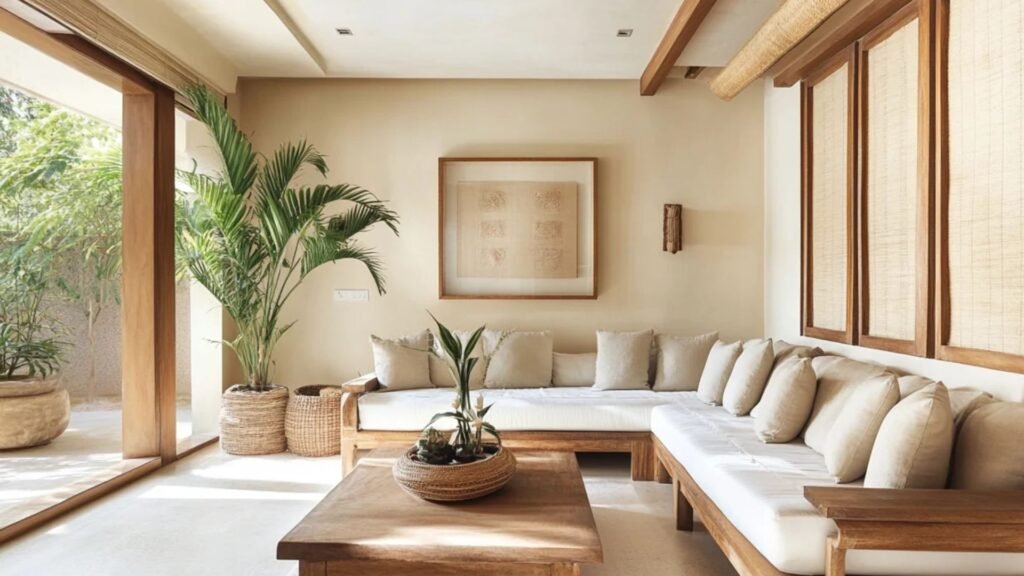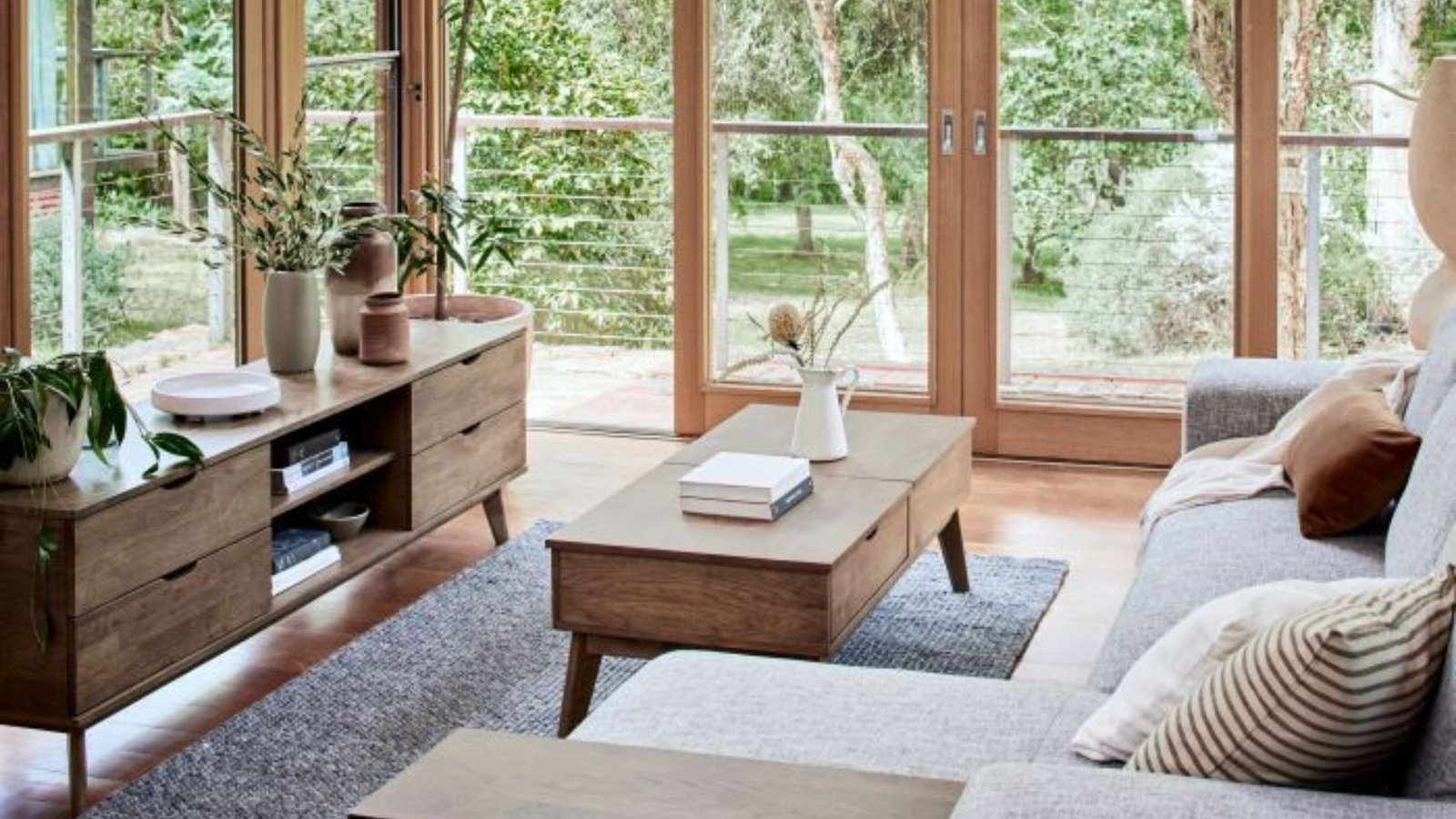
Timber Furniture as Sustainable Home Decor
In today’s world, sustainability is more than just a trend—it’s a necessity. As consumers become more eco-conscious, the demand for sustainable home decor has grown. One of the most timeless and environmentally friendly choices for home furnishings is timber furniture. Not only does timber add natural beauty to any room, but it also offers numerous sustainability benefits that make it an ideal option for homeowners who are conscious about their environmental footprint.
In this article, we’ll explore how timber furniture serves as a sustainable home decor choice, focusing on its environmental benefits, longevity, and how it can transform your living space into an eco-friendly haven.

Why Timber Furniture is Sustainable
Timber, when sourced responsibly, is one of the most sustainable materials for furniture. Its natural qualities—ranging from its biodegradability to its energy-efficient production process—make it an excellent choice for environmentally-conscious homeowners. Below are the key reasons timber furniture is considered an eco-friendly option.
1. Renewable Resource
Unlike synthetic materials that take centuries to break down, wood is a renewable resource. Well-managed forests ensure that trees are replenished at a sustainable rate, allowing timber to be used without depleting natural resources. Many furniture manufacturers today source their wood from certified sustainable forests, ensuring that the timber they use comes from responsible harvesting practices.
-
Certified Forestry: Look for certifications such as FSC (Forest Stewardship Council) that ensure wood is harvested responsibly.
-
Regrowth: Trees used for furniture can be replanted, maintaining the balance of ecosystems and preventing deforestation.
By choosing timber furniture made from responsibly sourced wood, you’re contributing to the preservation of forests and helping maintain a balance between human needs and nature’s health.
2. Low Carbon Footprint
Timber furniture typically has a much lower carbon footprint than mass-produced alternatives made from plastic or metal. The production of wood furniture requires fewer energy-intensive processes. Additionally, timber acts as a natural carbon sink, meaning it absorbs and stores carbon dioxide from the atmosphere. As a result, timber furniture helps offset some of the carbon emissions produced during its manufacture.
-
Natural Carbon Storage: The wood used in furniture continues to store carbon for the lifespan of the piece.
-
Less Energy-Intensive Production: Timber furniture usually involves less processing compared to plastic or synthetic alternatives, reducing the overall energy used in manufacturing.
3. Durability and Longevity
Timber furniture is built to last. Unlike particleboard or MDF (medium-density fiberboard) that can degrade or warp over time, solid timber is incredibly durable. A well-crafted timber piece can last for generations, reducing the need for frequent replacements. This longevity is not only cost-effective but also reduces waste and the consumption of resources over time.
-
Investment in Quality: Timber pieces often outlast cheaper alternatives, meaning fewer items need to be disposed of.
-
Timeless Appeal: Timber furniture doesn’t go out of style. Its natural beauty fits seamlessly into various home decor styles, from rustic to modern.
Choosing furniture that will last decades or even generations is a key factor in reducing your environmental impact.
The Environmental Benefits of Timber Furniture
Timber is not just sustainable in terms of resource availability—it also provides several additional environmental benefits, making it an even more attractive choice for eco-conscious home decor.
1. Biodegradable and Compostable
One of the standout benefits of timber furniture is its biodegradability. At the end of its useful life, timber will naturally break down and return to the earth, unlike plastic furniture that can persist in landfills for hundreds of years. When disposed of correctly, timber furniture can be composted or repurposed, minimizing environmental harm.
-
Less Waste: As timber decomposes naturally, it contributes less to landfill accumulation.
-
Repurposing: Old timber furniture can be repurposed into new pieces or used in creative ways, further reducing waste.
This biodegradable property is one of the main reasons why timber furniture is considered far more sustainable than its synthetic counterparts.
2. Natural Insulation
Timber also has excellent natural insulation properties. In a well-built home, timber furniture can help regulate temperature by keeping rooms warmer in winter and cooler in summer. This can reduce the reliance on heating and cooling systems, saving energy and lowering your carbon footprint.
-
Energy Efficiency: The natural insulation provided by wood can improve the energy efficiency of your home, leading to lower energy consumption.
-
Aesthetic Warmth: Timber furniture creates a warm, inviting atmosphere that adds a natural touch to your living space.
By incorporating timber into your home decor, you’re contributing to better energy efficiency, which is a key part of sustainable living.
How to Incorporate Timber Furniture into Your Home
Now that you understand the sustainable benefits of timber furniture, you may be wondering how to incorporate it into your home decor. Timber’s versatility allows it to work in various settings, from the living room to the office. Here are some tips for incorporating timber furniture into your home:
1. Mix Timber with Modern Elements
Timber furniture can complement a wide range of decor styles. In modern homes, combining timber pieces with contemporary elements like glass, metal, or minimalist furniture can create a striking contrast. The natural grain of wood adds warmth to sleek, clean-lined designs, creating a balanced, inviting space.
2. Focus on Functionality and Quality
When choosing timber furniture, prioritize quality over quantity. High-quality, well-crafted pieces will not only last longer but also serve a practical purpose in your daily life. Opt for timeless designs like solid wood dining tables, bookshelves, and cabinets that provide both beauty and function.
3. Pair Timber with Eco-Friendly Decor
To enhance the sustainable atmosphere of your home, pair timber furniture with other eco-friendly decor elements. Choose organic fabrics for upholstery, natural fiber rugs, and energy-efficient lighting. This will help create a cohesive, environmentally responsible design that reflects your commitment to sustainability.
4. Embrace Patina and Aging
One of the most charming aspects of timber furniture is how it ages over time. The wood’s patina becomes richer and more beautiful with age, making it a piece that grows in character. Embrace the natural aging process, and allow your timber furniture to tell its own unique story.
Conclusion
Timber furniture is a sustainable and beautiful choice for home decor. Its eco-friendly properties, including its renewable nature, low carbon footprint, and long-lasting durability, make it an ideal option for homeowners who want to reduce their environmental impact. Whether you choose a solid timber dining table, a rustic wooden coffee table, or sleek timber shelving, you’re making a conscious decision to invest in pieces that will not only last but also contribute to a greener planet.
By choosing timber furniture, you’re not just enhancing your home with natural beauty—you’re also supporting sustainability. Timber furniture’s ability to blend style, function, and environmental consciousness makes it a perfect fit for modern, eco-friendly living. So, the next time you’re decorating or updating your home, consider the benefits of timber—your space, and the planet, will thank you for it.




